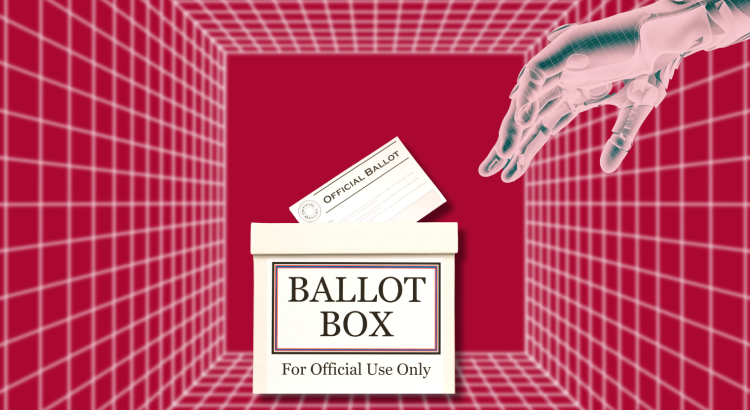Josh Shear – The past two decades have witnessed an accelerating shift in how governments, citizens, and institutions engage in the democratic process. At the heart of this change is what many are now calling the digital transformation of democracy. Traditional ballots and paper-based processes are being replaced by complex algorithms, machine learning, and even AI-generated policy suggestions. While this evolution offers promises of efficiency and inclusion, it also raises urgent questions about transparency, manipulation, and control.
In a time when your vote may be counted by software, your political opinions shaped by recommendation algorithms, and your data harvested by unseen entities, it’s worth asking: are we still participating in democracy, or are we entering a new, uncharted political system powered by machines?
The Evolution of Voting: From Paper to Pixels
Voting has always been the cornerstone of democratic participation. But in the digital era, ballots are no longer cast exclusively in person. From electronic voting machines to online voter registration, technology has altered the very mechanics of elections. Estonia, for example, has pioneered nationwide internet voting since 2005. Other countries, including India, Brazil, and the United States, have increasingly adopted electronic voting systems for their speed and accessibility.
However, with innovation comes risk. Security vulnerabilities, hacking attempts, and technical glitches have made many wary. A malfunctioning machine or a poorly coded algorithm can sway thousands of votes. Still, many governments are pushing forward, believing that modernization is the path to broader participation.
The digital transformation of democracy is already redefining the voting booth and soon, it may eliminate it altogether.
Bots in the Political Arena
One of the most controversial elements of digital politics is the rise of bots automated software that can mimic human behavior online. These bots are not just retweeting cat memes. They’re spreading political content, shaping public opinion, and even engaging in coordinated misinformation campaigns.
During major elections, researchers have discovered thousands of bot accounts amplifying divisive content, pushing hashtags, and sometimes even attacking candidates. While some bots are designed to provide information or enhance civic participation, the darker side reveals a growing influence that operates beneath public awareness.
These developments challenge the democratic principle of informed consent. If public opinion can be artificially inflated or manipulated by bots, can election outcomes truly reflect the will of the people?
Algorithms and Echo Chambers
The digital transformation of democracy is also playing out in our social feeds. Algorithms designed to optimize engagement often promote emotionally charged content, reinforcing users’ existing beliefs. This phenomenon, commonly referred to as the “echo chamber effect,” narrows perspectives rather than broadens them.
Facebook, YouTube, and TikTok, among others, use recommendation systems that subtly guide users toward certain types of content. While these tools help users find what they like, they also risk creating ideological silos where misinformation thrives.
This shift challenges the original vision of the internet as a marketplace of ideas. Instead, citizens now live in curated bubbles where exposure to opposing viewpoints is limited an environment where democracy can suffocate in its own digital design.
AI and Automated Governance
Looking beyond social platforms, AI has begun playing a more direct role in governance. Predictive analytics are being used in criminal justice systems, budgeting, and urban planning. Chatbots now handle citizen services, and machine learning is being explored for policy modeling.
In China, AI is being used to enhance the surveillance state, integrating citizen data to assess “social credit scores.” In contrast, Western democracies are experimenting with AI-driven simulations to predict the effects of legislation before it’s passed.
These technologies raise new ethical questions. Can AI be truly neutral? Who decides how these algorithms are trained and what biases they inherit? And most importantly, what happens when unelected systems start making decisions on behalf of the public?
As we move deeper into the age of automation, the digital transformation of democracy forces us to rethink the very notion of representation and accountability.
Citizen Engagement in the Age of Tech
While the risks are real, technology also offers unprecedented opportunities for engagement. Crowdsourced legislation, digital town halls, and blockchain-based voting systems could make participation more transparent and inclusive.
Startups and nonprofits are working on tools that enable citizens to directly propose and vote on policies in real time. Platforms like Polis have been used in Taiwan to crowdsource public opinion on divisive issues creating consensus through dialogue rather than division.
These initiatives point toward a future where citizens aren’t just voters every few years, but active participants in a constantly evolving digital democracy.
The New Shape of Civic Responsibility
Navigating this digital political landscape demands new forms of digital literacy. Citizens must understand not only how to vote but how algorithms shape what they see, how bots influence their feeds, and how their data fuels political campaigns.
Schools, media institutions, and governments must invest in educating the public about these mechanisms. Otherwise, democracy may become a system where few control the many through invisible lines of code.
Democracy has always been about power and power is shifting to those who understand technology.
Democracy Reimagined in a Digital Age
The digital transformation of democracy is not a far-off future. It is unfolding now, quietly and powerfully, reshaping the foundations of civic life. From how we vote to how we think about policy, digital systems are becoming the new gatekeepers of democracy.
Whether this transformation strengthens or undermines democratic values will depend on how we regulate these technologies, how we educate our societies, and how vigilantly we protect transparency and human agency.
In the end, the bots may be here to stay but the ballots must still reflect a human voice.



